Why do movie producers allocate mountains of money to depicting the teeniest details, over-the-top costumes, heart-pounding special effects and lavish scenery, yet fail to get it right when showing a routine task such as hand-washing clothes?
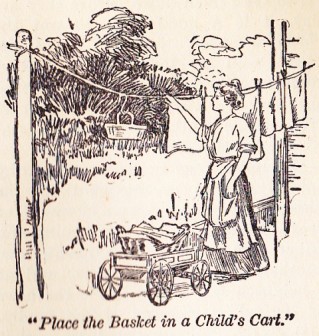 In a recent popular thriller, two women scrubbed a mass of clothes in a pond, and then toted the wet garments in a pail to a clothesline. One woman grabbed three sopping-wet pair of jeans and slung them over her shoulder to walk down the line to hang them. But first, she stood there and chatted with the supposedly wet jeans on her shoulder.
In a recent popular thriller, two women scrubbed a mass of clothes in a pond, and then toted the wet garments in a pail to a clothesline. One woman grabbed three sopping-wet pair of jeans and slung them over her shoulder to walk down the line to hang them. But first, she stood there and chatted with the supposedly wet jeans on her shoulder.
Anyone who has ever washed clothes by hand knows how difficult it is to wring out all (or even most of) the water, especially from heavy trousers, blankets or rugs. Why would anyone drape cold, wet jeans on themselves? I couldn’t figure out why those Hollywood producers who spent mega-millions on their movie didn’t take the time to accurately portray this simple domestic scene.
Then it hit me.
It’s because they didn’t know.
When I grew up in the 1960s and 70s, every home had a clothesline. Even if there was an electric or gas dryer inside, an outside line was used for sheets, blankets, delicate items and really heavy clothes. Not only was it more economical, the clothes felt and smelled so much nicer than if they’d come out of a hot, noisy, static-producing machine. I guess that’s why manufacturers quickly came up with a host of fake forest and flower scents to add to the rinse or drying cycles.
It’s rare to see clotheslines now, even in the country. Some city ordinances and homeowner associations even forbid them. So, it is no wonder Hollywood couldn’t get it right. When clotheslines are shown in movies, they are meant to portray poverty.
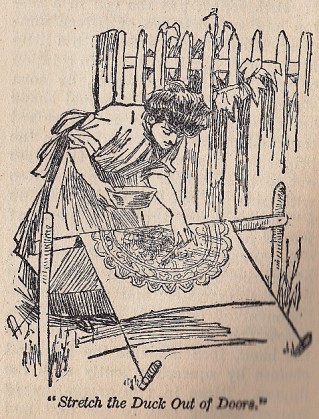 I came across a well-written blog the other day by a woman who admitted learning to dry clothes outdoors after her electric dryer broke and she couldn’t afford the repair bill. She wasn’t sure how and where to begin hanging clothes outside, so she spread some over the grape trellis to see what would happen. To her amazement, the clothes dried quickly and efficiently. She eventually put up a real clothesline and now claims double-digit savings on her electric bill.
I came across a well-written blog the other day by a woman who admitted learning to dry clothes outdoors after her electric dryer broke and she couldn’t afford the repair bill. She wasn’t sure how and where to begin hanging clothes outside, so she spread some over the grape trellis to see what would happen. To her amazement, the clothes dried quickly and efficiently. She eventually put up a real clothesline and now claims double-digit savings on her electric bill.
I assumed everyone already knows how to hang clothes on a line. But then I looked through my yellowed copy of a 1909 Household Discoveries book and found an entire chapter devoted to laundry skills. Some recommendations no longer apply, such as the need to take down the clothesline after use or to boil and harden the clothespins periodically (we can just buy new supplies every year or two).
Typical of my husband, Mr. WaterBuck, who builds everything to last several centuries, my clothesline is made of 1-1/2” galvanized pipe set in concrete. Good wooden posts are sufficient. Even stringing a line between trees will work – and will save much money on your utility bills.
Many people have mentioned to me how difficult it must have been to live before electricity and modern conveniences. I disagree, even after reading this 1909 suggestion for housewives:
“Plan for Wash Day – Get up at daylight and get the washing out of the way as early as possible. It is surprising how much can be accomplished early in the morning before the regular routine of the day begins.”
If that sounds like a chore, consider many American household routines: Get up before daylight, shower, put on expensive, uncomfortable clothing, makeup, hair goo and drive 45 minutes to an indoor, fluorescent-lit computer job. Nine or 10 hours later, drive home completely drained of energy. Toss the clothes in the washer and dryer, and be sure to take them out before bedtime so they will be ready for work the next day.
No thank you.
Oh, the book also recommends buying a good washing machine:
“Like the sewing machine, this instrument has a very important bearing upon the welfare of the family by lessening the physical labor devolving upon the wife and mother, and thus saving much of her energy for the higher and more elevated duties of the household.”
Here are more 100-year-old clothes-drying tips to lessen your physical labor:
- Do not let clothes freeze as it damages the fibers and fades colors.
- Add salt to rinse water to help keep clothes from freezing.
- Hang whites in the sun and colored articles in the shade.
- Make an apron with a large, baglike pocket to hold clothespins for convenience while working. (I made one from old jeans and it really is the handiest tool.)
- To keep hands warm in freezing weather, boil the clothespin bag and dry the pins by the fire before heading outdoors.
- Every few weeks, immerse the clothespin bag in boiling water for 3-5 minutes. Spread out the pins to dry quickly by the fire or in the sun. This keeps them from becoming brittle and cracking.
- Dip the heads of part of the clothespins in dark paint, some in light paint and leave the rest unpainted. Use the dark ones for colored clothes, the white for miscellaneous towels and the unpainted for sheer whites.
- Hang tablecloths, sheets and blankets by the corners, not draped from the middle, to keep them from being damaged in the wind.
- When taking down clothes, put the clothes basket in a wagon to move along with you. Shake the wrinkles from each article, fold and lay them orderly in the basket rather than a disorderly mess.
Now, I’m ready to tackle some of my more elevated (and fun!) duties, such as getting my vegetable seedlings ready to transplant. To read more hints from 1909, visit Household Discoveries on Open Library.org. The Wash Day chapter begins on page 355. If you’re also interested in building a privy the old-fashioned way, read this.
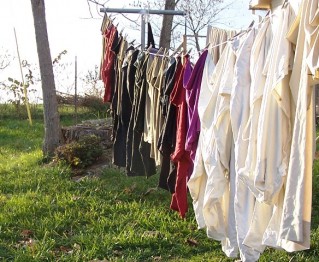
Hardwood Clothespins: We’ve just learned Herrick Kimball, the Deliberate Agrarian, who is also an enterprising woodworker, is making clothespin kits. The heirloom-quality hardwood clothespins are oiled and waxed to last for years. Great idea, eh? Here is his website dedicated to Classic American Clothespins.
More good news: Granny’s Clothespins Bags are back in stock. Around here, we believe in doing our part for the planet by recycling, up-cycling and repurposing. Working by daylight on an antique treadle sewing machine, we’re turning old britches into tough, practical products for your home. All of our Jeans Overhauled items are unique, machine washable, and — like all Well WaterBoy Products — are made right here in Missouri to last for many years of everyday use.
Stays open for easy access to clothespins. Wire hanger slides along easily as you work. Tough denim exterior, reinforced along top with extra layer of denim and belt loops, lined with country calico or gingham fabric. Holds more than 200 clothespins. Bag is 13”H by 6” in diameter. These super-tough bags sell for $25 each, including shipping to anywhere in the United States. Contact us for multiple orders.
Granny’s Clothespin Bag — $19 Granny’s Clothespin Bag
Southwestern Print Clothespin Bag — $23 Granny’s Clothespin Bag
© 2013 Well WaterBoy Products LLC ♦ WaterBuck Pump™
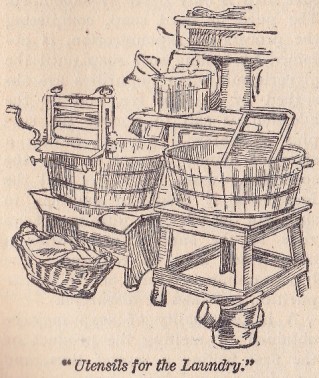
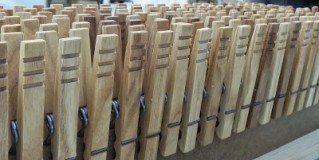


Pingback: » Let’s Bring Back Victory Gardens - Prepper Ways
Pingback: A Call to Revive Victory Gardens » Tiny Houses - Tiny Greenhouses
Pingback: A Call to Revive Victory Gardens |
Pingback: A Call to Revive Victory Gardens - American Preppers Network : American Preppers Network
Pingback: Bring Back Victory Gardens | WaterBuck Pump hand pump, WaterBoy Well Bucket, Human powered machines